
We Tried It: The Best Lip Mask to Combat Chapped Lips
Last Updated: June 6, 2022
Does your smacker need a lil’ TLC? Grove writer Mackenzie tried out Rooted Restorative Lip Treatment – a plant-powered lip mask that’s packed with hydrating ingredients. Read on for an in-depth review and attain the perfect pout for yourself.
As I write this, my pout refuses to be anything but soft and supple. Normally, this wouldn’t be a problem, but today I wanted to try the Rooted Restorative Lip Treatment and give you the low-down on whether it delivers on what it promises. Alas, since there’s nothing about my lips that needs restoration, I’ve had to get creative. So over the last couple of days, I’ve tried drying them out with cheap lip gloss, a thick coat of Wet ‘n’ Wild eyeshadow, undiluted peppermint oil (it burned!) and a baking soda paste to wick out the moisture — all to no avail.
So while I sit here in front of the space heater in a last-ditch effort to dry out my stubbornly silky lips, let’s talk lip masks. What are they? How do you use them? What’s the diff between a lip mask and a lip balm — and why can’t you just slather your dried-up maw in Vaseline instead? Read on for answers to all of these questions — and more.
What is a lip mask?
Lip masks are ultra-thick, ultra-hydrating jars of nourishing goop that promise to restore dry, cracked lips to their glory days. Rooted Beauty, a brand dedicated to concocting skincare products with a host of antioxidant-rich ingredients, has excelled at the lip mask game.
Meet the Rooted Restorative Lip Treatment. It’s got Rooted Beauty’s signature R7 complex – which blends seven superstar root extracts with avocado oil and agave nectar to keep lips healthy and soft. It’s also got skin-loving jojoba oil, nourishing beeswax, and the creme de la creme of moisturizers, shea butter.
R7 complex? Tell me more
Happily! Rooted Beauty’s R7 complex is a potent mixture of seven powerful botanicals:
Angelica root: calms irritation and helps detoxify skin.
Burdock root: has anti-inflammatory and anti-bacterial properties.
Ginger root: has a ton of antioxidants that help combat the free radicals that cause fine lines and wrinkles.
Ginseng root: helps protect against free radicals that age skin.
Licorice root: has antioxidant and anti-inflammatory properties that help keep skin healthy.
Mallow root: helps balance the skin — and it’s a powerful moisturizer.
Yucca root: has anti-inflammatory effects to help calm irritation.
What’s the difference between a lip balm and a lip mask? Lip balms are good for daily maintenance and hydration, when your pout is already soft and you want to keep it that way. But sometimes, you need a product with a bit more punch. That’s where lip masks come in. Lip masks have a thicker formula than balms, and they’re ideal for extreme dryness from winter winds, indoor heating, or too much sun.
Grove Tip
Is Vaseline bad for you?
Vaseline is a refined form of petroleum jelly that prevents moisture from leaving the skin, which isn’t a bad thing. But the downside is that it doesn’t add moisture in. There’s nothing wrong with using purified petroleum jelly, but if your lips are already dry, a thick layer of jelly isn’t going to do much in the way of rehydrating them.
How do you use a lip mask?
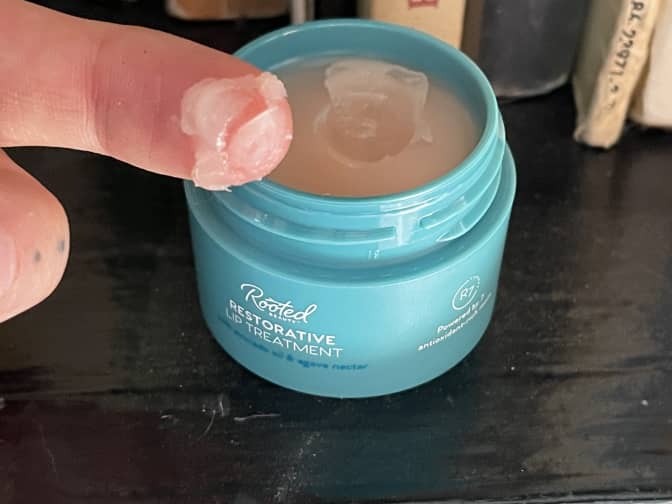
How long do you wear a lip mask?
Rooted Restorative Lip Treatment doesn’t need to be removed, so you can wear it as long as you want to. Apply it during the day, or wear it overnight for a super-soft pout when you wake up in the morning.
How often do you use a lip mask?
You can use a lip mask everyday, multiple times a day. You can even replace your current go-to lip balm with the Rooted Lip Treatment to achieve maximum hydration, day in and day out.
Rooted Restorative Lip Treatment: before and after
You’re probably wondering if my attempts to suck the moisture from my lips with baking soda and space heaters worked. Sadly, no.
It wasn’t until a couple of days later, when I was in the throes of suffering from too many White Claws the night before in preparation for trying out The Good Patch hangover cure patch, that my perfect, pillowy lips finally threw in the towel and succumbed to my will. They looked and felt rough enough to give Rooted Restorative Lip Treatment a run for its money.
But that didn’t seem like a big enough challenge for this lip treatment, so I decided to put Rooted Restorative to the ultimate test — the dark lipstick test! Would it make my pout smooth enough to wear my favorite deep burgundy lip stain? Let’s find out with some before and after photos.
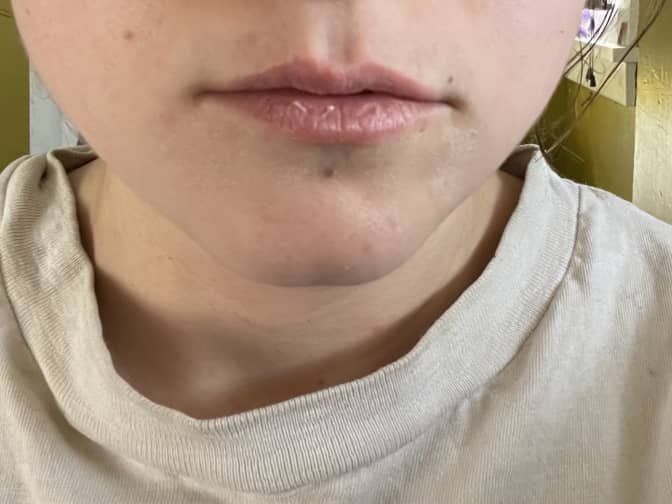
Hangover lips
You wake up groggy, hungover, and dehydrated after a night of drinking — and it shows. Your lips feel like someone rubbed sandpaper on them. Even your go-to lip balm absorbs into the flayed crevices within minutes of applying it. Time to bring in the big guns! Here’s how Rooted Restorative Lip Treatment did on what I’m officially dubbing “hangover lips.”
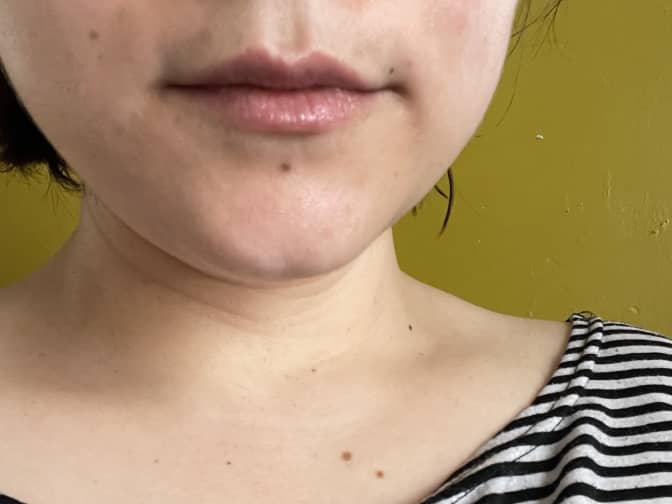
The verdict: She’s luscious! She’s hydrated! The Lip Treatment definitely did the trick. I applied a thin layer to my post-Dionysian pout and let it do its thing while I ran errands and guzzled SportTea. My lips were back to being insufferably soft by the time I got home.
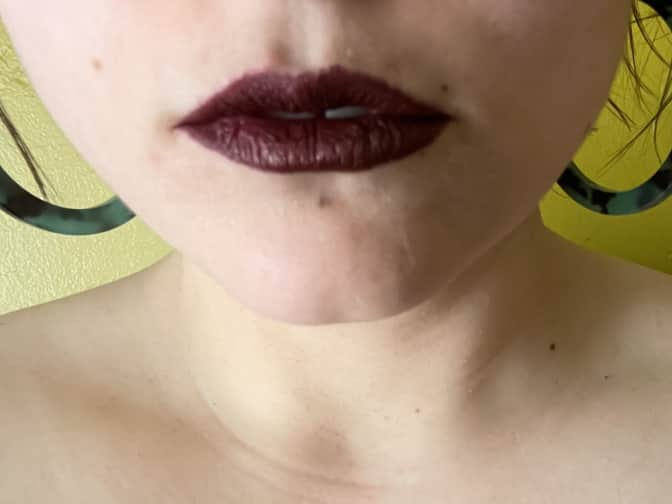
Dark lipstick
The struggle to get the perfect dark lip is real. Something about those deep plums and wine reds really brings out every crack and magnifies every flake. What I’m saying is, a flawless pout is a must if you’re going dark. So, did the Restorative Lip Treatment pass the dark-lip test?
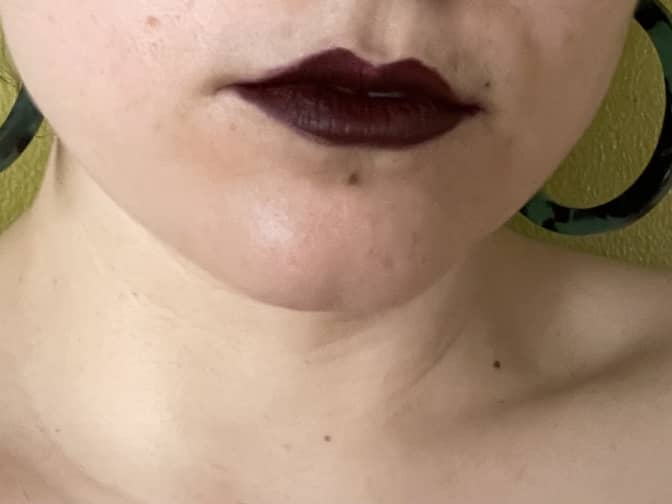
The verdict: See that? No lines, no cracks, just vampy vibes for hours. If you also struggle to get a feather-free dark pout, a lip treatment like this one works wonders. I left it on for 20 minutes before I wiped it off and went in with the lipstain — and the results speak for themselves. You can also try applying primer to your lips before you put on your lipstick — or scrub ‘em with a hydrating lip scrub to get smooth coverage.
